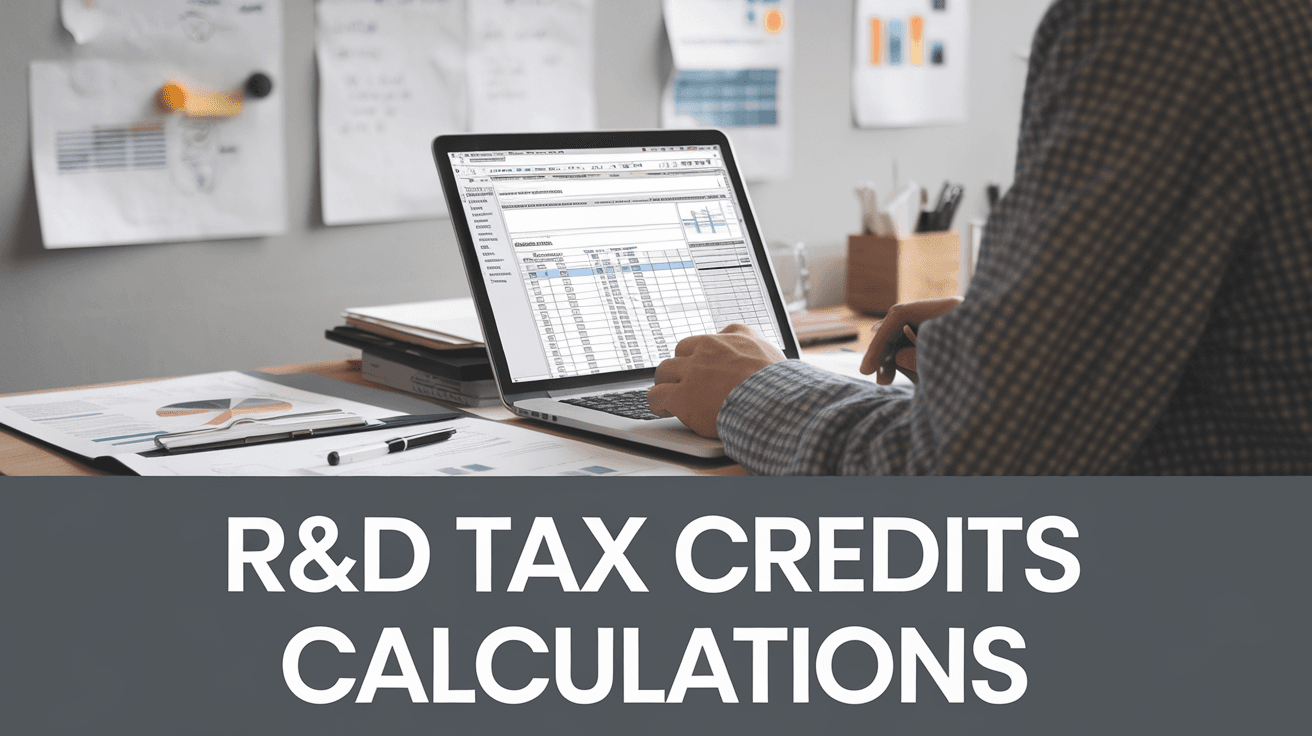R&D Tax Credits Mansfield Woodhouse Nottinghamshire
R&D tax credits in Mansfield Woodhouse Nottinghamshire are a financial incentive designed to encourage innovation and development. These credits enable companies to claim a percentage of their eligible R&D costs against their tax liabilities, fostering growth and advancement in the local business community.
To qualify, your company must engage in projects that resolve scientific or technological uncertainties, incur direct costs such as staff wages and materials, and maintain detailed documentation of your R&D activities. This ensures that your claim is robust and meets the criteria set by HMRC.
By leveraging the expertise of R&D Tax Credit Specialists, you can maximise your claim and ensure compliance with HMRC regulations. They can help identify eligible activities, capture all relevant expenses, and minimise the risk of audit, allowing you to focus on driving innovation and growth.

How Do R&D Tax Credits Benefit Mansfield Woodhouse Businesses?
R&D tax credits provide financial incentives for businesses in Mansfield Woodhouse to invest in research and development. These credits can significantly reduce your tax liability and boost your innovation efforts.
Financial Advantages
R&D tax credits offer a direct financial boost by reducing your corporation tax bill. For every pound you spend on qualifying R&D activities, you can claim a tax credit worth up to 33p. This can be a substantial sum for small and medium-sized enterprises (SMEs).
Competitive Edge in Innovation
By leveraging R&D tax credits, your business can allocate more resources to innovation projects. This not only enhances your product offerings but also helps you stay ahead of competitors in Mansfield Woodhouse. Investing in R&D allows you to develop cutting-edge solutions and technologies, ensuring you remain a leader in your industry.

Which Industries Commonly Claim R&D Tax Credits?
Technology Sector, manufacturing, life sciences, and others frequently claim R&D tax credits. These industries are known for their significant investment in innovation and development.
Technology Sector
The technology sector is a leading claimant of R&D tax credits. Companies in this industry often invest heavily in software development, artificial intelligence, and data analytics, making them prime candidates for these incentives.
Manufacturing
Manufacturing firms are also common claimants, particularly those involved in advanced technologies and automation. These companies often undertake extensive research to improve production processes and develop new materials.
Life Sciences
In the life sciences sector, R&D tax credits are crucial for companies working on pharmaceuticals, biotechnology, and medical devices. The high costs of clinical trials and product development make these credits especially valuable.
Others
Other industries, such as renewable energy and construction, also benefit from R&D tax credits. These sectors often engage in innovative projects that push the boundaries of technology and sustainability.

What Qualifies as R&D Under UK Tax Law?
R&D under UK tax law refers to activities that seek to achieve an advance in science or technology through the resolution of scientific or technological uncertainty. To qualify, the work must not just be routine, but must involve genuine innovation and experimentation.
Qualifying Activities
Research and Development (R&D) includes projects aimed at creating new products, processes, or services, or improving existing ones. For instance, developing new software, enhancing manufacturing processes, or creating innovative medical devices all qualify. If your project involves substantial scientific or technical challenges and is not a simple extension of existing knowledge, it likely qualifies.
Excluded Activities
Certain activities are explicitly excluded from qualifying as R&D under UK tax law. Examples include market research, management studies, and quality control. Routine data collection and analysis, as well as the creation of artistic or literary works, also do not qualify. It’s important to distinguish between activities that involve genuine innovation and those that are part of standard business operations.
When in doubt, consult with a tax advisor to ensure your activities align with the criteria set by HMRC.

How Are R&D Tax Credits Calculated?
R&D tax credits are calculated based on the eligible costs you incur during your research and development activities. These costs typically include staff salaries, materials, and certain external expenses.
SME Scheme
Under the SME Scheme, you can claim up to 130% of your eligible R&D costs. This means if you spend £100,000 on R&D, you can claim £130,000, which can significantly reduce your corporation tax liability. The SME Scheme is designed to support smaller businesses with fewer than 500 employees and a turnover or balance sheet of less than £100 million.
RDEC Scheme
For larger companies, the RDEC Scheme (Research and Development Expenditure Credit) applies, you can claim a credit of 13% of your eligible R&D costs. This credit can be offset against your corporation tax liability or, if your company is loss-making, you can receive a cash payment from HMRC. The RDEC Scheme is more complex and is intended for companies with over 500 employees or a turnover exceeding £100 million.

Recent Changes to UK R&D Tax Credits
The UK Government has introduced several updates to the R&D Tax Credits scheme, reflecting the ongoing commitment to support innovation and research in the country. These changes aim to make the scheme more accessible and beneficial for businesses.
Policy Updates
- Increased Relief for SMEs: The SME relief rate has been raised, providing more financial support for smaller companies.
- New Digital Technologies Focus: The scheme now places a stronger emphasis on digital technologies, encouraging investment in this area.
- Simplified Application Process: The application process has been streamlined to reduce the administrative burden on businesses.
These updates are designed to ensure that the scheme remains relevant and supportive of the evolving needs of businesses in the UK.
Impact on Businesses
The changes to the R&D Tax Credits scheme are expected to have a positive impact on businesses, particularly SMEs. By increasing the relief rate and simplifying the application process, more companies will be able to access the financial support they need to drive innovation and growth. This should lead to increased investment in R&D activities, fostering a more dynamic and competitive business environment in the UK.

How Can Mansfield Woodhouse Businesses Apply for R&D Tax Credits?
Mansfield Woodhouse businesses can apply for R&D tax credits by following a straightforward process. This initiative is designed to support innovation and development within your company.
Application Process
- Register for an HMRC account: If you don’t already have one, you’ll need to register on the HMRC website.
- Determine your eligibility: Ensure your project qualifies as R&D by checking HMRC’s criteria.
- Prepare your claim: Gather all necessary documentation and financial data to support your claim.
- Submit your claim: Use the HMRC website to submit your R&D tax credit application.
Required Documentation
- Project description: A detailed outline of the R&D project.
- Financial records: Include costs related to staff, materials, and subcontractors.
- Technical documentation: Provide any reports, patents, or research papers that support your claim.
By following these steps, you can successfully apply for R&D tax credits and benefit from financial support for your innovative projects.

Title: Common Pitfalls to Avoid When Claiming R&D Tax Credits
When claiming R&D tax credits, it is crucial to avoid certain mistakes that can lead to rejections or audits. Here are the key pitfalls to watch out for:
Overclaiming
Overclaiming occurs when you include ineligible costs or exaggerate the scope of your R&D activities. This can result in your claim being rejected or subject to a lengthy and costly investigation. Always ensure that the costs and activities you include in your claim are genuinely related to R&D and are supported by clear evidence.
Underclaiming
Underclaiming happens when you fail to include all eligible R&D activities and costs, resulting in a smaller credit than you are entitled to. This can happen due to a lack of awareness of what qualifies as R&D or fear of overclaiming. Review the HMRC guidelines thoroughly to ensure you are not leaving any eligible expenses out of your claim.
Documentation Errors
Documentation errors can derail your claim if you do not have the necessary evidence to support your R&D activities. This includes inaccurate records, missing invoices, or lack of detailed project descriptions. Keep meticulous records of all R&D activities, costs, and outcomes to prevent any discrepancies in your claim.

How Can Professional Advice Enhance R&D Tax Credits Claims?
Professional advice can significantly boost the success of R&D Tax Credit claims by ensuring you identify and claim all eligible activities and costs. Here’s how expert guidance can make a difference:
Role of Tax Credit Specialists
- Identifying Eligible Projects: Tax credit specialists can help you pinpoint specific projects and activities that qualify for R&D Tax Credits.
- Maximising Claim Value: They ensure you capture all relevant expenses, from staff wages to materials, to maximise your claim.
- Compliance and Accuracy: Specialists ensure your claims comply with HMRC regulations, reducing the risk of audit and rejection.
Benefits of Expert Guidance
Expert guidance can streamline the R&D Tax Credit process, making it more efficient and effective. For instance, by working with R&D Tax Credit Specialists, you can:
- Save Time and Resources: Avoid the hassle of navigating complex regulations on your own.
- Increase Confidence: Gain peace of mind knowing that your claim is robust and well-supported.
By leveraging the expertise of R&D Tax Credit Specialists, you can focus on driving innovation while ensuring your business reaps the financial benefits it deserves.
In Conclusion
R&D tax credits in Mansfield Woodhouse Nottinghamshire are a vital financial tool designed to support and encourage innovation. By claiming these credits, your business can significantly reduce its corporation tax bill, allowing you to reinvest in further R&D and maintain a competitive edge in the market. To maximise the benefits, it’s crucial to ensure your claims are accurate and comprehensive, and this is where R&D Tax Credit Specialists can provide invaluable support. If you haven’t already, consider consulting with them to navigate the process and secure the full financial advantage you deserve.

